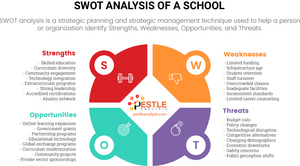A SWOT analysis of a school helps in understanding a school’s competitive advantage and minimizing instability. Here's how to do it.
SWOT analysis is a guideline for understanding the strengths, weaknesses, opportunities, and threats relevant to a school. To understand a school’s competitive advantage and minimize instability, we’re going to teach you how to do a SWOT analysis of a school. It helps you see:
- Which areas need developing?
- Which areas are thriving?
- Which areas are stagnant?
- And which areas could ruin everything?
SWOT Analysis of a School
Strengths in School: What’s going right for a school
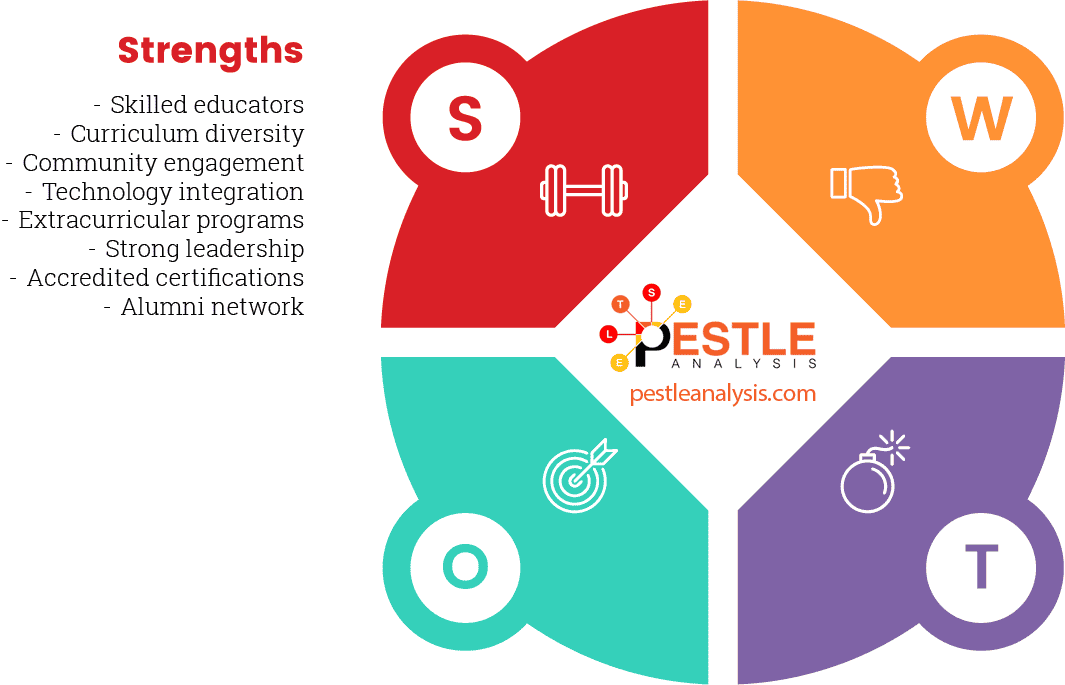
The first step is to identify strengths; that is, benefits that enhance the quality of your school. It’s easier to write down overall strengths and then narrow them down to the specifics. To prevent thought-block, consider if these strengths are relevant to your school. You have:
- An abundance of co-curricular activities
- Highly-trained teachers/professors
- Strong funding/financial backing
- High graduation percentages
- Accredited certifications
- Community engagement
- Great location for families
- Technology integration
- Strong leadership
- Alumni network
You need to know a school's existing strengths to keep them as strengths and plan how to enhance them to reap more benefits.
For example, High Tech High, a network of charter schools in California, has been recognized for its innovative approach to education by integrating project-based learning with state-of-the-art technology. The school utilizes technology across its curriculum, encouraging students to use digital tools for research, collaboration, and presentation, making technology an integral part of their everyday learning environment. This strength has helped High Tech High stand out as a leader in educational innovation and effectiveness.
Let's move on to the “W” in SWOT analysis of a school: weaknesses.
School Weaknesses: What’s holding the school back
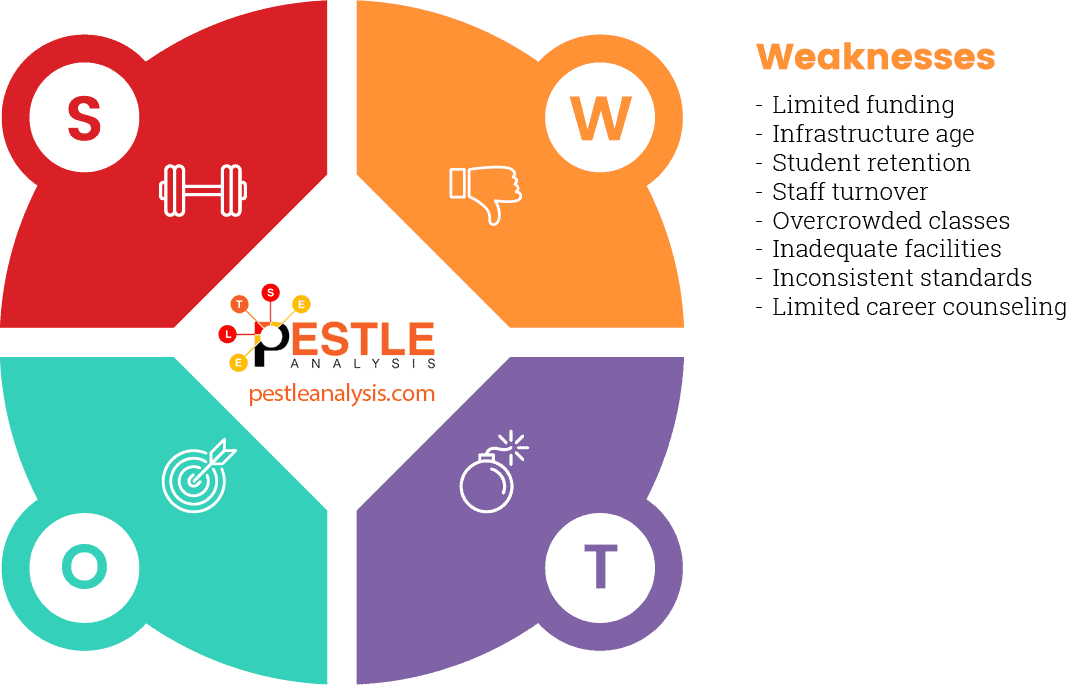
Seeking out weaknesses can be tricky. Sometimes we try to minimize the effect of weaknesses because they’re blights we’d rather not see. But weaknesses aren’t to be ashamed of. And to build a strong school and reduce impact, weaknesses must be acknowledged.
When we acknowledge weakness, we’re one step closer to creating a plan of attack. The plan will eliminate or reduce any impact the weakness may have on the school. Here are a few weaknesses to consider for this SWOT analysis of a school:
- Not enough co-curricular and sports activities
- Lack of funding for specific sports/programs
- Enhanced reports of cyberbullying
- Not enough staff/faculty members
- Staff unable to meet with parents
- Lack of proper training for faculty
- Poor internal communications
- Limited career counseling
- Overcrowded classes
- Poor testing scores
- Bad reviews online
- Infrastructure age
- Student retention
How severe are your weaknesses? Let’s use an example from the above list. Starting with “staff unable to meet with parents.” To parents, this can have a big impact on their child’s grades. But for the school it’s a minor inconvenience. Especially compared to not having enough staff for every position in the school. Finding appropriate staffing is an issue requiring immediate attention.
Another example can be seen with Detroit Public Schools concerning limited funding. The school district has historically faced severe financial constraints, impacting nearly every aspect of its operations. These funding limitations have resulted in reduced staffing, larger class sizes, and less frequent updates to textbooks and other learning materials.
There’s another good thing about weaknesses: they help to create opportunities.
Opportunities for a school: The positive changes for a school

Opportunities have the ability to just happen. But why leave it up to fate? SWOT analysis helps us to identify opportunities to benefit a school. And we also have the ability to create opportunity -— especially now that we’ve identified weaknesses.
Let’s look at how we can turn a weakness into an opportunity.
Weakness: Poor testing scores.
Opportunity: Introduce a new program designed to help students, after school or during their lunch period, to address previous test concerns.
This new program will assess students’ ability to understand the curriculum. Not only will the students receive the help they deserve, but the school will also be praised by students and parents alike.
Another weakness turned opportunity...
Weakness: Bad online reviews.
Opportunity: Respond to these reviews professionally, while also highlighting how the school plans to correct the issues presented in the reviews.
This shows the school is actively assessing problems and seeking out methods to correct said issues. It’s damage control. Without it, the reviews could get out of hand and fully tarnish the school’s reputation.
We’re creating opportunities out of weaknesses to limit their impact.
Other opportunities to include:
- Activate a volunteer committee for school-related events.
- Seek out new investors and funding for programs.
- Cut or merge programs to move funding elsewhere.
- Ask students and parents for feedback.
- Highlight new program developments.
You also want to note which opportunities are coming up. Look at it this way:
- How can you use these opportunities to increase the school’s strengths (from the list you created?)
- How can you use these opportunities to decrease weaknesses?
- And where can we start creating opportunities?
A real-life example for opportunities for a school has been Singapore's Ministry of Education embracing online learning. With the advent of the COVID-19 pandemic, Singapore swiftly expanded its use of online platforms and digital tools for education. This transition was not just a temporary adjustment but part of a broader strategy to integrate technology more deeply into the educational framework.
School Threats: What a school should be prepared for
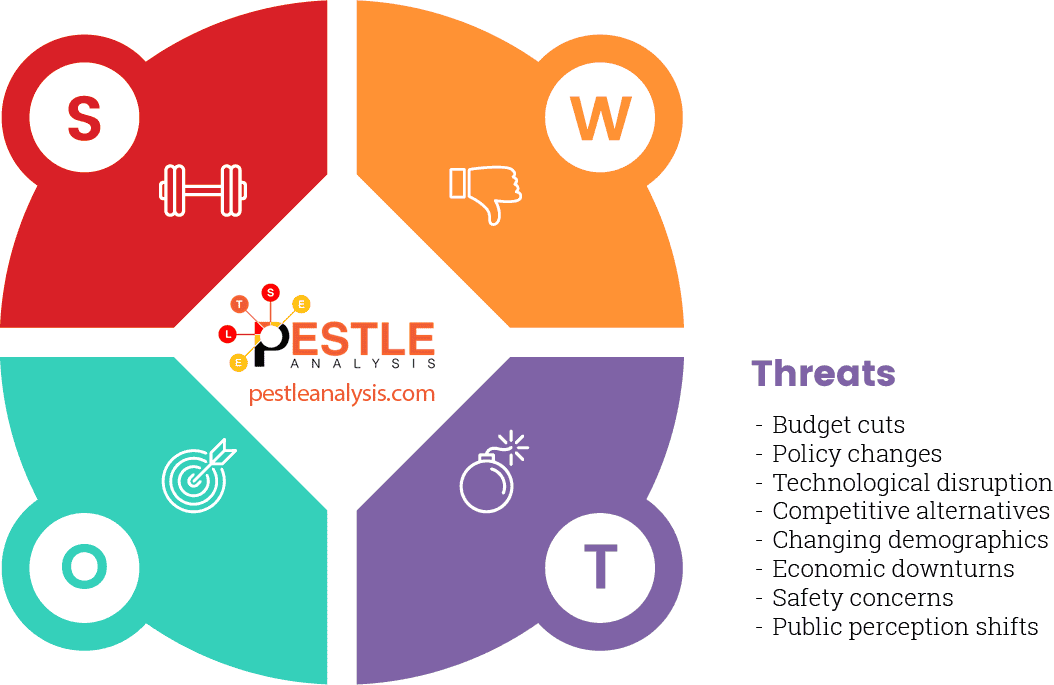
Threats aren’t weaknesses. Weaknesses already exist and must be dealt with. Threats might lead to complications… but they might not.
We acknowledge threats to create a plan. Because if we don’t understand the threat, it can’t be dealt with accordingly.
Let’s look at some threats:
- Poor planning of curriculum/activities.
- Too much internal communications.
- Lack of internal communications.
- New high school development.
- Plumbing complications.
- Parent complaints.
- Employee/work strikes.
- Lack of funding.
- Pulled funding.
Threats are to be on your radar at all times. If you can create a plan of action to address these threats, hop to it. But if you can’t — such as the risk of strikes or labor disputes — being aware is a good first step. Because you can create a plan of response if these threats manifest into reality.
Back in 2009 for example, the Los Angeles Unified School District (LAUSD) faced budget cuts. As the second largest school district in the United States, LAUSD has periodically struggled with financial stability, exacerbated by state and federal budget cuts. These financial reductions threaten various aspects of the educational system, including staffing levels, student support services, and the maintenance of school facilities.
Diving Deeper in SWOT Analysis
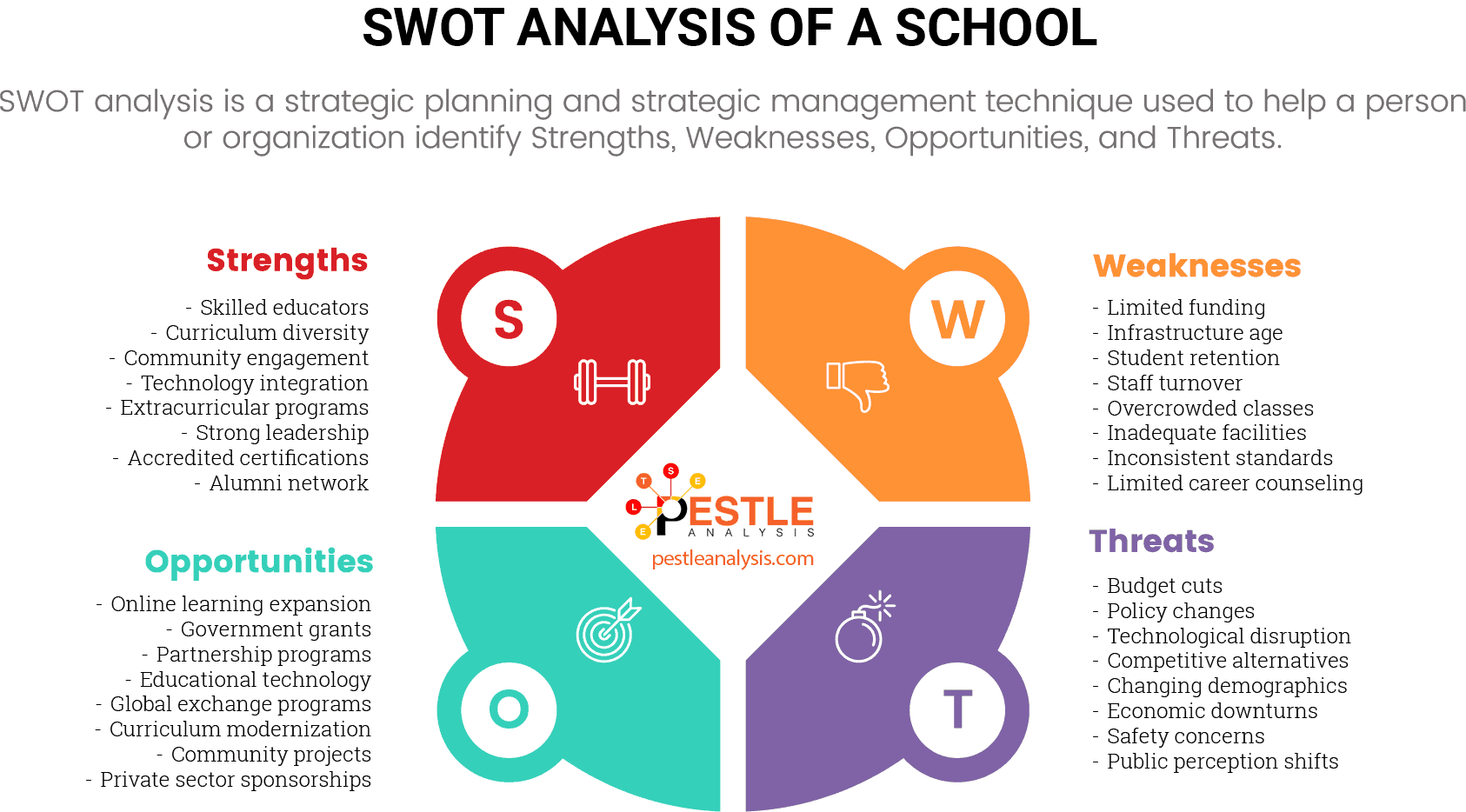
You do a SWOT analysis of a school because it highlights and expands strengths. It minimizes or even erases weaknesses. It allows the creation of opportunities. And it identifies threats to prevent blowups. SWOT analysis is a framework for understanding the present and future situation of a school. And all it takes to complete is time.

